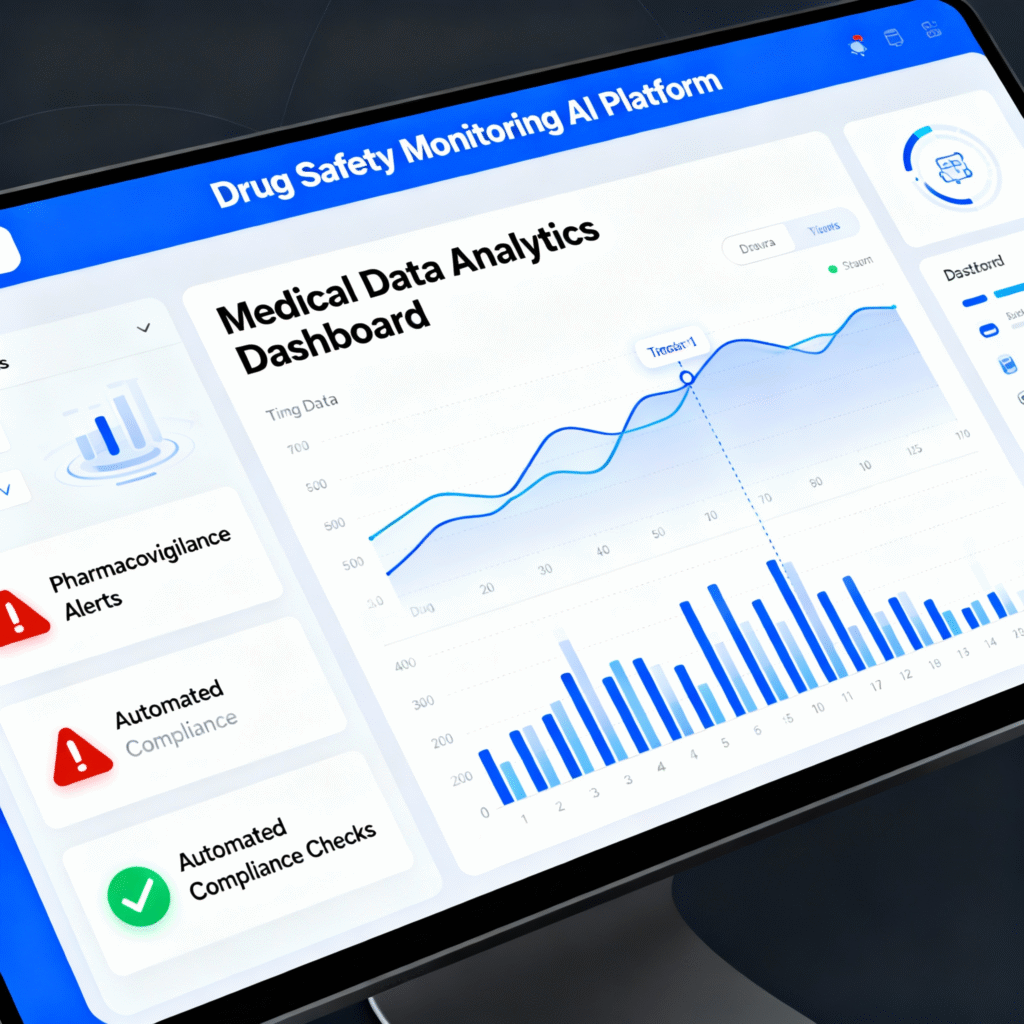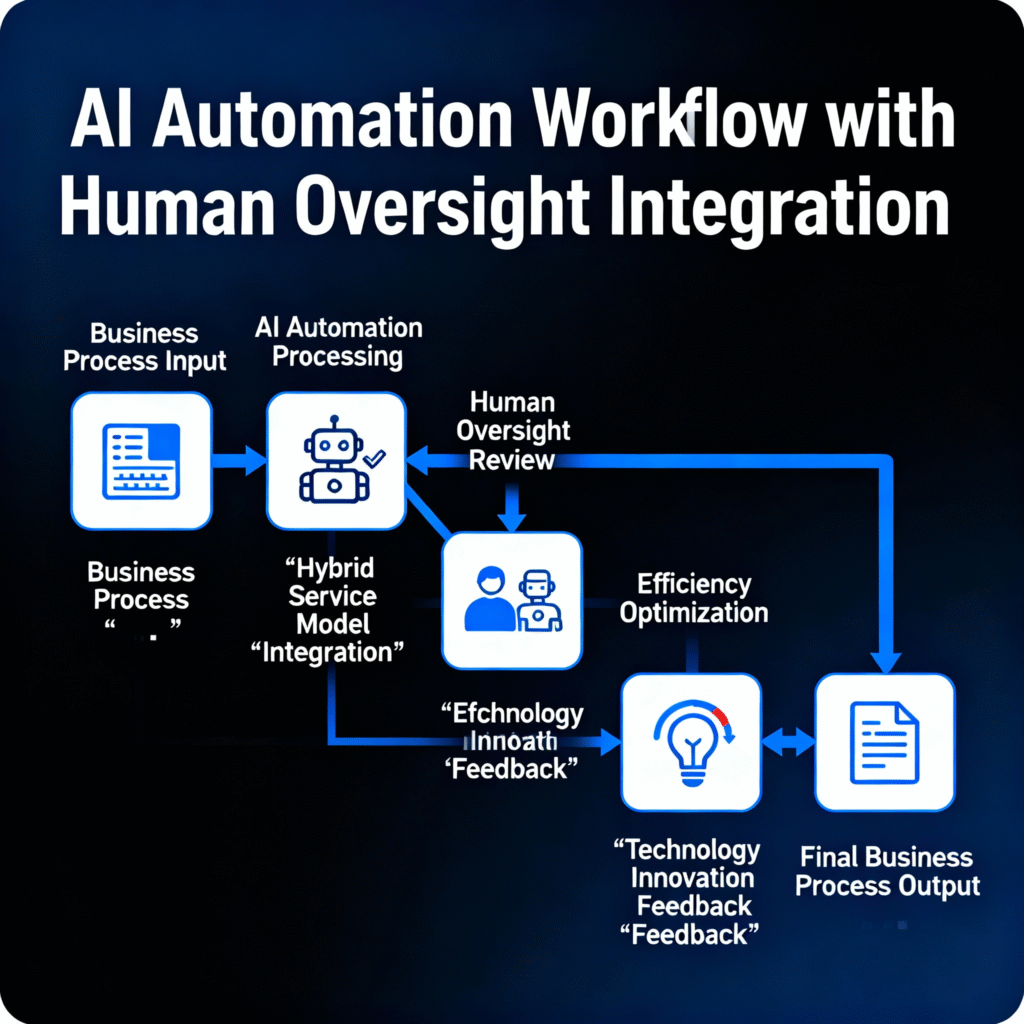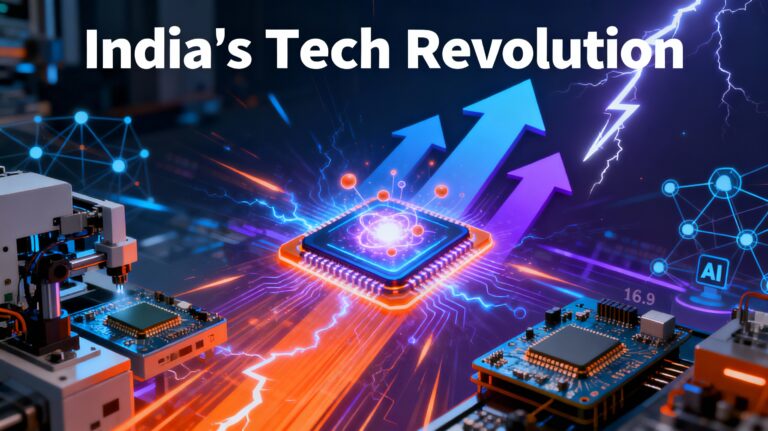
Key Highlights:
Historic Disruption: AI-native startups challenging India’s $264 billion IT services sector as enterprises allocate 25-30% of budgets to AI-first vendors, breaking decades-old incumbent monopolies
Three Disruption Models: Pure software platforms (Graph AI in pharmacovigilance), AI-enabled hybrid services (Crescendo, Shopdeck), and services for AI infrastructure (Scale, Turing)
Paradoxical Growth: Despite price compression and automation fears, sector projected to exceed $400 billion by 2030 (8.7% CAGR) as AI expands total outsourcing opportunity
Traditional Vulnerabilities: Billable-hour models, under 2% R&D investment, headcount-driven growth, and standardized entry-level workforce leave incumbents exposed to AI disruption
Value Proposition Shift: AI-first firms deliver rapid time-to-value (4-week demos vs 18-month failures), outcome-based pricing, and founder-led domain expertise challenging legacy relationship advantages
The $264 Billion Empire Faces Its Biggest Threat Yet
India’s $264 billion IT services sector—the backbone of global technology outsourcing for decades—is facing a disruption of historic proportions. A new breed of AI-native startups, built from the ground up with artificial intelligence at their core, is fundamentally challenging the people-heavy, billable-hour model that made Indian IT giants what they are today.
These aren’t incremental improvements or minor innovations. According to a groundbreaking report by Bessemer Venture Partners titled “AI Services Roadmap: Reinventing IT Services in the Age of AI,” we’re witnessing a once-in-a-generation inflection point where the very foundations of traditional outsourcing are being rewritten by automation, intelligence, and data-native workflows.
The transformation is already measurable. Enterprises are allocating 25-30% of their technology budgets to AI-first vendors, with traditional players retaining 70-75%—still dominant, but no longer holding monopoly power. Chief experience officers (CXOs) across industries, under pressure from boards and investors to demonstrate tangible ROI from AI investments, are increasingly open to new partners beyond their long-established IT relationships.
Yet paradoxically, this disruption doesn’t spell doom for India’s IT industry. Instead, the sector is projected to exceed $400 billion by 2030, growing at 8.7% annually from its current FY25 valuation. The question isn’t whether India’s IT services will survive—but which players will capture the expanded pie, and how dramatically the competitive landscape will be redrawn. knnindia.co
The Traditional Model: Strengths That Built an Empire
Historical Success Pillars
India’s IT services dominance wasn’t accidental. It was built methodically on three unassailable pillars:
A vast skilled talent pool providing cost arbitrage advantages that made India the world’s preferred outsourcing destination. The “follow-the-sun” delivery model ensuring 24/7 service availability across time zones, a critical capability for global enterprises. And deep client relationships spanning decades, with embedded expertise in client systems, processes, and industries creating substantial switching costs.

These advantages propelled Indian IT companies—TCS, Infosys, Wipro, HCL, Tech Mahindra—to become household names in boardrooms across North America and Europe. The model was simple yet powerful: deploy large teams of skilled engineers at competitive rates, charge by the hour or headcount, and deliver round-the-clock service.
Vulnerabilities Exposed by AI
But the very model that generated decades of growth now reveals critical weaknesses in an AI-first world:
Billable-hour models create misaligned incentives. When revenue depends on hours worked rather than outcomes achieved, there’s limited motivation to dramatically improve efficiency. AI threatens this fundamental business model—if tasks can be completed in hours instead of weeks, traditional pricing collapses.
Low R&D investment haunts the industry. Traditional IT services firms typically invest under 2% of revenue in R&D, compared to 20%+ for product companies. This leaves them ill-equipped to build cutting-edge AI capabilities internally, dependent instead on acquiring or partnering for technology they should be pioneering.
Headcount-driven growth rather than productivity-led expansion defines the traditional approach. Success was measured by how many engineers you could deploy, not how much value each engineer created. AI inverts this paradigm entirely—value now comes from algorithmic efficiency, not human hours.
The standardized entry-level workforce faces acute automation risk. Junior developers performing repetitive coding, testing, and maintenance tasks—the traditional entry point for fresh graduates—are precisely the roles most vulnerable to AI replacement.
The AI-Native Disruption: Three Categories of Challengers
Bessemer’s report identifies three distinct categories of AI-first challengers emerging to reshape the IT services landscape: knnindia.co
Category 1: Pure Software Plays
These companies deploy fully automated, end-to-end intelligent platforms with minimal human interaction. They aren’t services firms in the traditional sense—they’re software products that eliminate the need for services altogether.

The poster child is Graph AI, which raised $3 million in seed funding from Bessemer Venture Partners to transform the $8 billion pharmacovigilance market. Pharmaceutical companies are legally required to continuously monitor, detect, and report adverse drug events (ADEs) throughout a drug’s lifecycle—a process traditionally handled by armies of pharmacology graduates manually combing through call center transcripts, legal filings, medical literature, emails, and social media posts.
Graph AI’s flagship platform, Graph Safety, uses context-aware AI and intelligent automation to automate this end-to-end. The results are staggering: up to 70% efficiency gains, 90% faster regulatory reporting, and significant cost savings for enterprise clients.
A case study demonstrates the disruption viscerally: Graph AI delivered a working demo in 4 weeks after an incumbent service provider failed for 18 months. Full production rollout took just 8 weeks. The platform now supports a growing pipeline covering over 7,000 marketed drugs.
Other examples in this category include Leena AI automating HR operations and Atomicwork using AI agents for autonomous IT service management.
Category 2: AI-Enabled Services
This hybrid model combines AI automation with human-in-the-loop oversight, balancing efficiency with quality control. These companies don’t eliminate humans—they radically transform the human role from executors to supervisors. bvp

Shopdeck and Crescendo exemplify this approach. Rather than deploying large teams to execute tasks manually, they deploy AI systems to perform the bulk of work, with specialized human experts overseeing, validating, and handling edge cases requiring judgment.
InvestorAi, working in asset management, focuses on knowledge-intensive positions in portfolio creation, oversight, and adjustment—front-office operations historically deemed too complex for automation. Co-founder Bruce Keith explains: “The distinction this time lies in embedding expertise and generating outcomes, making front-office operations suddenly feasible”.
In education and healthcare, NPrep uses AI-enhanced workflows that have supplanted traditional manual methods in nursing recruitment and student training. Dr. Utkarsh Paliwal, co-founder and Chief Strategy Officer, notes that their approach integrates domain expertise directly into AI systems, something traditional service firms struggled to scale.
Category 3: Services for AI
The third category comprises infrastructure providers for AI development. As enterprises rush to build and deploy AI systems, they need specialized services for data preparation, labeling, and quality assurance, model training and fine-tuning, evaluation and testing, and operational monitoring and maintenance.
Companies like Scale and Turing operate in this space, providing the behind-the-scenes infrastructure that makes AI development possible. While less visible than pure software plays, this category is critical—every AI system requires these foundational services.
The Shifting Enterprise Mindset
Pressure to Adopt AI
The urgency driving this transformation comes directly from the top. Boards and investors aren’t asking if enterprises will adopt AI—they’re demanding evidence of tangible ROI from AI investments now.
Nithin Kaimal, COO and Partner at Bessemer Venture Partners, observes: “What we’re seeing is enterprises are super keen and under pressure from investors, boards, etc., to adopt AI and convert it to tangible revenue or bottom-line impact. Almost every CXO at every enterprise is interested in moving to an AI-first approach”.
This pressure fundamentally changes procurement dynamics. Previously, CXOs were “very happy with their long-term partners”. Now there’s explicit “room for new players”—a seismic shift in an industry where relationships and trust historically trumped every other consideration.
Risk Diversification Strategy
Enterprises are increasingly recognizing that “incumbents cannot solve everything perfectly”. This acknowledgment—almost heretical in an industry built on comprehensive service agreements—is opening doors for specialized AI-first vendors.
The budgeting reflects this strategic diversification. While 70-75% still flows to traditional players, the 25-30% allocated to AI-first vendors represents a massive market opportunity. For context, 25% of $264 billion is $66 billion—larger than the entire IT services sectors of many developed nations.
Critically, enterprises aren’t viewing this as an either-or choice. It’s a portfolio approach: maintain relationships with proven incumbents for core systems and large-scale projects, while simultaneously experimenting with AI-native specialists for specific use cases where speed and innovation matter most.
Competitive Dynamics and Market Implications
Global Competition Landscape
Indian AI-first startups aren’t competing only against Indian IT giants—they’re competing with Silicon Valley and global players on equal footing. Geography matters less when your product is software-driven automation accessible globally via cloud.
These startups maintain distributed presence across US, Europe, and India markets, with founders often based in California while development teams operate from Bengaluru, Hyderabad, or Pune. Success requires being “best in class” regardless of geography—a higher bar than legacy cost arbitrage models.
Venture capital reflects this global ambition. Peak XV (formerly Sequoia India), Stellaris, Accel, Elevation Capital, and Khosla Ventures are aggressively backing AI-led services startups. Stellaris founder Ritesh Banglani states: “Our belief is that India holds a special advantage in providing these AI-led services to the world. We know how to scale people-heavy operations and sell services – not just software”.
Value Proposition of AI-First Models
Why are enterprises willing to risk unproven startups over established relationships? The value proposition is compelling:
Rapid time-to-value and measurable ROI. Where traditional projects take months or years from contract to production, AI-first platforms can demonstrate value in weeks. Graph AI’s 4-week demo versus 18-month incumbent failure exemplifies this speed advantage.
Outcome-based or usage-based pricing versus billable hours. AI-first companies price for results, not effort. Anagh Prasad, VP at Accel India, explains: “By being able to price for the outcome, AI-first services companies can charge like services but earn like software”.
Founder-led deep domain expertise. Many AI-first startups are founded by industry veterans who understand specific verticals deeply. Graph AI’s founding team includes veterans from Infosys, Google, Cisco, and ServiceNow with decades in life sciences.
The 2030 Projection: Growth Amidst Transformation
Market Expansion Forecast
Despite—or perhaps because of—the disruption, India’s IT services sector is projected to grow from $264 billion in FY25 to over $400 billion by FY30. This represents a compound annual growth rate (CAGR) of 8.7%—healthy by any measure.
The growth stems from a counterintuitive dynamic: short-term price compression is offset by expanded outsourcing capabilities. As Nithin Kaimal explains: “In the short term, yes—growth has slowed, and many enterprise clients are using AI as a lever to negotiate lower prices, citing productivity gains. However, we view this as a temporary pause in a longer, decade-scale growth story”.
Paradox of AI Impact
Here’s the surprising twist: AI enables more work to be outsourced, not less. Large language models (LLMs) are making previously “un-outsourceable” complex tasks from North America and Europe suddenly feasible for outsourcing.
Knowledge work that required deep contextual understanding, nuanced judgment, and cultural familiarity—historically performed in-house or by expensive consultants—can now be augmented by AI to the point where outsourcing becomes viable.
Kaimal continues: “As AI matures, higher share of complex tasks will be managed through a blend of automation and human expertise, driving a new wave of outsourcing demand. While some contracts may shrink in size due to automation, overall addressable market will expand as enterprises increasingly outsource higher-value, AI-enabled work”.
Positioning for Outsized Value
The key insight: traditional players may capture volume, but AI-first players are positioned to capture “outsized value”. They operate at higher margins, solve more strategic problems, and command premium pricing despite often undercutting incumbents on total cost.
This is the software playbook applied to services—earn like software, deliver like services. The economics are fundamentally different and more favorable than traditional billable-hour models.
Strategic Decision-Making Framework
Traditional IT Services Firms
The existential questions facing incumbents are stark:
How to transition from headcount-driven to productivity-led models? This isn’t merely operational—it requires rethinking compensation, career paths, and organizational metrics that have defined success for decades.
R&D investment priorities and AI capability building. Moving from 2% R&D spend to 15-20% means fundamentally different resource allocation and risk tolerance. It also means competing for AI talent against tech giants and well-funded startups.
Pricing model transformation. Shifting from time-and-materials to outcome-based pricing upends sales processes, contract structures, and risk management.
Talent reskilling imperatives. What happens to hundreds of thousands of junior engineers whose entry-level roles are automatable? Reskilling at scale is unprecedented.
AI-Native Startups
The challenges for upstarts are equally formidable:
Market entry strategies. Which of the three categories—pure software, AI-enabled services, or services for AI—offers the best opportunity given capabilities, timing, and competition?
Building trust with enterprises accustomed to established vendors. How do you convince risk-averse procurement teams to bet on an unproven startup for mission-critical operations?
Scaling challenges while maintaining quality and domain expertise. Can you preserve the founder-led depth and specialized knowledge that differentiated you as you grow to hundreds of employees?
Enterprises and CXOs
Decision-makers must navigate complex trade-offs:
Budget allocation between incumbents and new AI-first vendors. Is 25-30% for new players the right balance, or should it be higher or lower depending on industry, use case, and risk tolerance?
Risk assessment: Single-vendor dependency versus multi-vendor management. Diversification reduces concentration risk but increases coordination complexity.
ROI measurement frameworks for AI investments. How do you measure success when value comes from efficiency gains, faster time-to-market, and strategic flexibility rather than delivered hours?
Policymakers and Investors
The macro implications demand attention:
Supporting AI innovation ecosystem while protecting existing employment. India’s IT sector employs millions—how do you foster disruption without triggering mass unemployment?
Infrastructure needs for AI services industry. Does India have the cloud infrastructure, data centers, and digital backbone to support AI-native businesses at scale?
Skill development and workforce transition planning. What training programs, educational reforms, and support systems are needed to transition workers from legacy to AI-first roles?
Challenges and Risk Factors
Industry-Wide Challenges
Maintaining resilience amid pricing compression. Even if total market expands, individual contracts may shrink 30-50% in value due to AI-driven productivity. Not all players will survive this transition.
Workforce displacement and reskilling challenges. Junior roles most vulnerable to automation are precisely the entry points for fresh graduates. India produces hundreds of thousands of engineering graduates annually—where do they go if entry-level IT jobs disappear?
Quality assurance in AI-driven delivery models. When AI handles most work, how do you ensure accuracy, detect errors, and maintain standards—especially in regulated industries like pharma, finance, and healthcare?
Challenges for New Entrants
Client acquisition in a relationship-driven market. Enterprises value long-term relationships and proven track records. Startups must overcome deep-seated trust advantages incumbents enjoy.
Sustaining competitive advantage as incumbents adapt. Traditional IT firms aren’t standing still—they’re acquiring AI capabilities, partnering with tech vendors, and restructuring delivery models. The window of opportunity may be shorter than startups assume.
Managing rapid scaling without compromising domain expertise. Founder-led deep knowledge is a key differentiator, but founders can’t personally oversee every engagement as companies scale. How do you institutionalize expertise?
Opportunities for India’s Tech Ecosystem
Expanded Outsourcing Scope
LLMs are enabling outsourcing of work previously considered too complex, nuanced, or culturally specific. This expands the total addressable market beyond traditional IT services into knowledge work across industries.
New revenue streams beyond traditional IT services include AI consulting, model training and fine-tuning, AI ethics and governance advisory, and industry-specific AI platforms.
Innovation and Entrepreneurship
Growing venture capital interest in AI-first service models is evident—Stellaris, Peak XV, Accel, Elevation, and others are actively scouting. The funding environment for proven AI-services startups is robust.
India has potential for its startups to lead global AI services transformation, not merely participate. Ritesh Banglani of Stellaris: “Our bet is that tech-first services startups will be able to build distribution faster than the incumbents can build technology”.
Talent Evolution
The shift from standardized workforce to specialized AI/domain experts creates new career pathways. Rather than 100,000 junior developers doing repetitive work, imagine 10,000 AI specialists building systems that amplify productivity 10x.
Conclusion: Navigating the Transition
The transformation of India’s IT services sector isn’t a zero-sum game between incumbents and disruptors—it’s an expansion of the entire opportunity set. Traditional IT giants bring scale, client relationships, and comprehensive capabilities that remain valuable. AI-first challengers bring speed, specialized expertise, and fundamentally different economics.
Co-existence is not only possible—it’s inevitable. Enterprises need both broad-based system integrators for large-scale infrastructure and specialized AI vendors for cutting-edge solutions. The question is what percentage each captures, and how quickly market share shifts.
Key success factors transcend company age or size: adaptability to rapidly evolving AI capabilities, continuous innovation rather than resting on past achievements, and outcome-focused delivery that ties compensation to results, not hours.
For India’s tech ecosystem, this represents expansion, not replacement. The $264 billion becoming $400 billion isn’t theoretical—it’s the market’s verdict that AI enhances rather than eliminates outsourcing opportunities. India’s advantages—talent, cost efficiency, global client trust—remain intact. What changes is how that advantage manifests.
Traditional IT firms that successfully pivot to AI-first models could emerge stronger than ever. Startups that scale without losing their innovation edge could become the next generation of IT giants. And India itself, positioned at the intersection of massive talent supply and exploding global AI demand, could cement its status as not just the world’s back office, but its AI services powerhouse.









+ There are no comments
Add yours